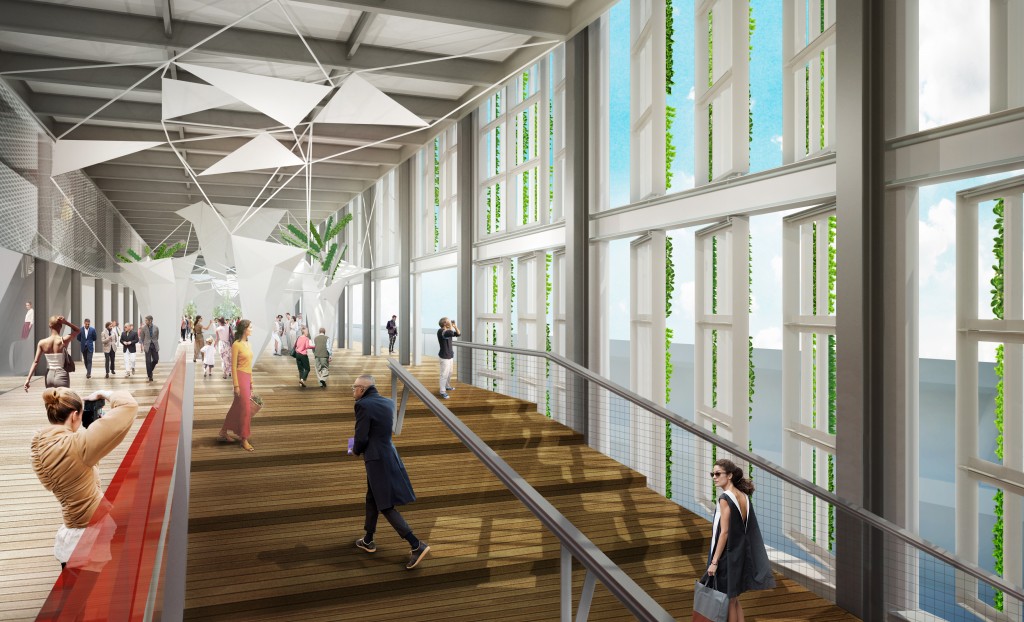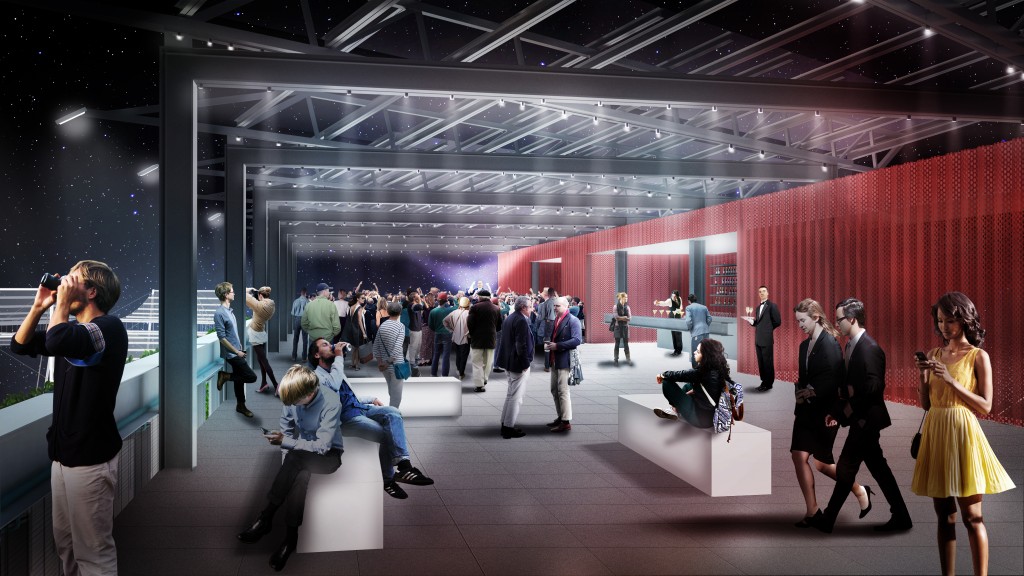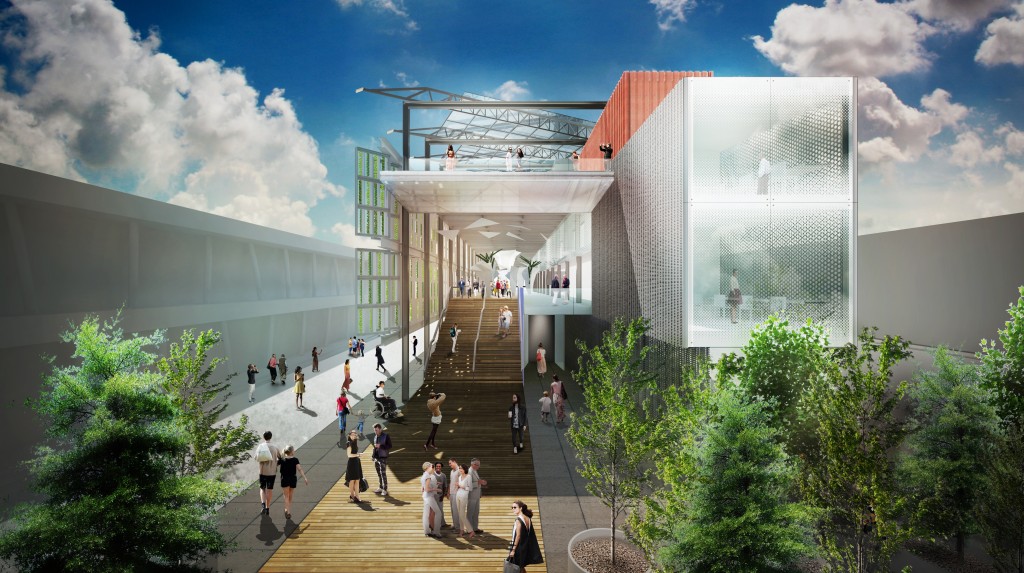By Susie Reese
More than 140 countries will be represented in Milan, Italy this May for Expo Milano 2015, a Universal Exhibition. These world fairs have given us such landmarks as the Eiffel Tower, the Ferris Wheel, and the Space Needle, but the expos themselves are instruments of innovations, conversation pieces on the world’s coffee table; places where technology, ideas, and solutions converge.
This year, Expo Milano 2015 hopes to create a global conversation about sustainability and sustenance with the theme “Feeding the Planet, Energy for Life.” More than 20 million visitors will explore the countries’ pavilions, taste the world’s flavors, explore the 12,000-treed exhibition park, and take part in a lively dialogue about the future of food and its effects upon the world’s equilibrium.

The USA Pavilion was designed by James Biber and Biber Architects and will exude the American spirit.
American Food 2.0: United to Feed the Planet
The United States will take part in the expo with the theme “American Food 2.0: United to Feed the Planet,” and its pavilion strives to illuminate the challenges the world will face to feed more than 9 billion people nutritiously by 2050. James Biber, architect of the USA Pavilion, designed the building to exude the spirit of America as a country and an ideal.
“The pavilion was about creating an impression and environment that reflected certain aspects about the U.S., such as openness and transparency,” explains Biber.
However, what influenced the pavilion’s design most was the tradition of American agricultural buildings. Biber wanted a simple, functional, straight-forward design like American barns.
“Our building celebrates local, simple agricultural buildings that aren’t fancy or over-designed,” Biber emphasizes. “It is instantly understandable; not a complicated, concealed over-designed pavilion, we hope.”
Coney Island heads to Milan.
The barn-inspired pavilion will feature a perforated aluminum façade of red, white, and blue on one side and a living farm on the other. It will include a hydroponic façade showcasing the past, present, and future of the American farm and diet, a rooftop terrace on which to overlook the entire fair, and the iconic Coney Island Boardwalk.
Notes Biber, “We looked for elements that were iconic connections between place and food, and Coney Island is distinctively American.”

The inside of the USA Pavilion will have wood from the iconic and distinctly American Coney Island Boardwalk.
The wood will be imported from New York since Superstorm Sandy destroyed much of the aforementioned boardwalk, leaving a tremendous amount of savaged timber available.
A Different Way to Farm
Also included in the USA Pavilion is a vertical farm, which will be harvested by display arborists who usually trim trees. Panels on the farm’s hydroponic towers can be removed and replaced before being harvested in the greenhouse.
“[Our vertical farm] is a live, growing piece that talks about the history and evolution of agriculture in America,” Biber points out, “and it seems like this active, living, lush wall was a better way to view it than videos.”
Biber especially likes the way each panel has a motor and moves. “It has an ‘amber waves of grain’ motion to it. It’s going to be an amazing spectacle.”

The vertical farm makes the USA Pavilion one of the most productive in the expo, growing more than 100,000 pounds of food during the showcase.
The design of the farm was inspired by the Land Ordinance of 1785, which helped to create the distinctive grid system that our country used to divide land.
Notes Biber, “America is the only place I’ve ever flown where the whole country is gridded. It’s astonishing, and we’re used to it because we see it all the time.”
Biber sought to design a pavilion and by extent, a vertical farm that pays tribute to the history of American agriculture, which this gird format provides.
“It’s still a feature in America,” Biber emphasizes, “There’s an incredible utilitarian, egalitarian aspect about grids, and for those reasons, we thought it was important to express that on the vertical farm.”
Food at the Pavilion
Expo Milano 2015 is being revered as a “grand worldwide food event.” The world’s biggest restaurant will be one of the centerpieces of the expo, and the mascot’s even named “Foody.”

The USA Pavilion will have a rooftop viewing deck where visitors will be able to see the entire expo.
For the United States, food will be provided at Food Truck Nation, which will showcase iconic American favorites like hamburgers, BBQ, Korean tacos, lobster rolls, and more. The culinary specialties will change from week to week to highlight the different flavors and ingredients celebrated in the U.S.
“Food trucks are not uniquely American, but they are unique when invention is occurring in food trucks instead of traditional restaurants,” Biber explains. “That’s one very American element in our presentation.”
The food harvested from the pavilion’s vertical farm, which will total more than 100,000 pounds during the six-month event, will be sent to local food shelters in Milan.
“It seemed best to help to feed some of the 7 billion people who are on the planet now,” Biber emphasizes. “We do work for organizations like the Robin Hood Foundation here in New York and think the world of organizations whose causes are near and dear to our heart.”
But Biber wanted to make use of the USA Pavilion’s vertical farm.
“A lot pavilions at the fair will have green walls,” Biber explains. “They’ll be decorative, and they may have something growing in them for the whole six months. We wanted to make ours actually produce. It’s the ethic of America that we are extremely productive.”

The USA Pavilion strives to illuminate the challenges the world will face to feed more than 9 billion people nutritiously by 2050.
It remains to be seen whether the expo will succeed in creating an ongoing conversation about the challenges the world faces when balancing sustenance and sustainability, but as Biber explains, America is the world’s biggest food importer. It’s continuously researching and investing to help solve global food concerns, and the pavilion addresses America’s vital role in feeding 9 billion people.
Points out Biber, “It’s a different kind of pavilion that’s meant to address a different kind of expo.”
Expo Milano 2015 opens May 1 and ends Oct. 31.


